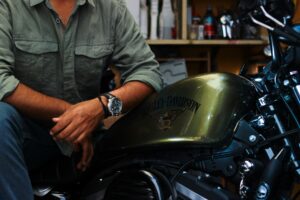When it comes to concealed carry, there are many options for wearing a handgun. One of the most effective ways to conceal a firearm while still providing access is the Inside the Waist Band holster (IWB). The IWB holster is worn on the belt and rides inside the pants.
Daily use and wardrobe
Concealed carry is more than just a right protected under the Constitution by the Second Amendment. Concealed carry is a lifestyle and should the reader make that decision to go armed to protect one’s family and loved ones there are certain behaviors that obviously need to adapt. Most of these pertain to situational awareness and mindset, which we will not discuss in this article.
With the IWB holster, the major adaptation is wardrobe. You most likely will be unable to use an IWB holster while wearing board shorts, gym shorts, sweat pants or any type of trousers without a proper belt.
The belt is probably the most important piece of equipment when it comes to concealed carry. Most belts sold in department stores and men’s clothing stores do an adequate job of holding up a pair of pants, but for concealed carry, a gun belt is needed.
A gun belt (or rigger’s belt or Ranger belt) can be leather or thick ballistic nylon. It supports the weight of the holstered firearm and keeps the pants from sagging (which gives away the concealed part of the equation). Quality belts are made by the same companies that manufacture holsters.
Pant size may be another consideration for wardrobe. Sometimes it is necessary to go up a size in order to accommodate the added bulk of a holstered firearm, so those “skinny jeans” simply will not work.
Most people who carry IWB leave their shirt un-tucked or wear a light outer garment such as a windbreaker or sweatshirt to aid in concealment.
Positioning
Where the holster will be positioned is a matter of personal preference. This comes down to comfort and accessibility.
The strong side or dominant hand side is most popular and for a good reason. In a highly charged and stressful situation such as drawing a handgun to defend your life, your body will experience loss of fine motor skills due to an adrenaline dump in what is known as the “fight or flight syndrome”. As a result you will be restricted to gross motor skills and simple movements. Bringing your hand down to make the draw will be easy but will still require hours of practice beforehand to ensure it is performed correctly.
Wearing the IWB holster on the strong side still requires positioning and the holstered handgun will need to be kept consistently in the same place whether it is the appendix position (just right of the belt buckle) at the 3 o’clock position (or 9 o’clock for southpaws), or closer to the kidney. This placement is based on concealment ability and comfort level and is specific to the individual. We all have different comfort levels and body types.
Wearing an IWB holster is not as simple as tucking a handgun in your belt line and forgetting about it. With proper training and preparedness this system can be an easy one to adapt to when you go forth in the world as a lawfully armed citizen.


